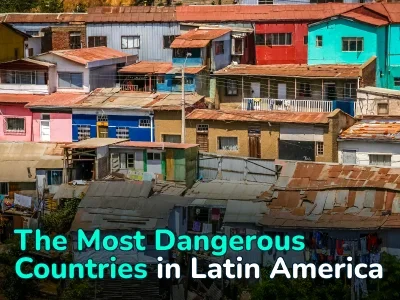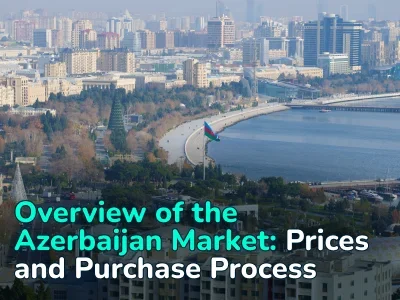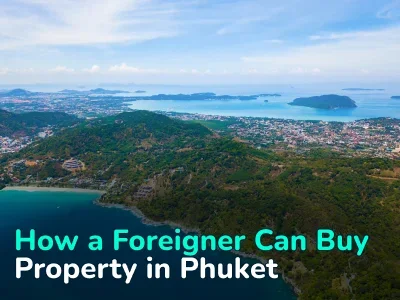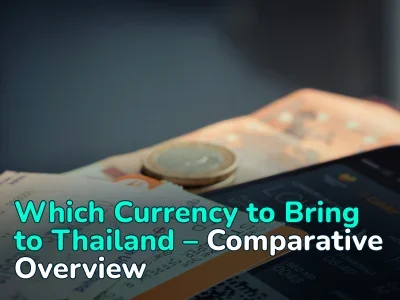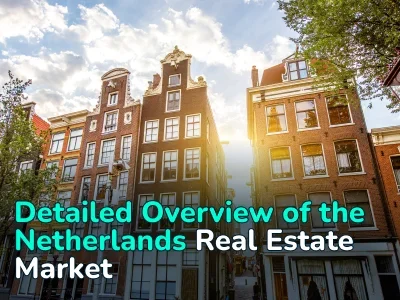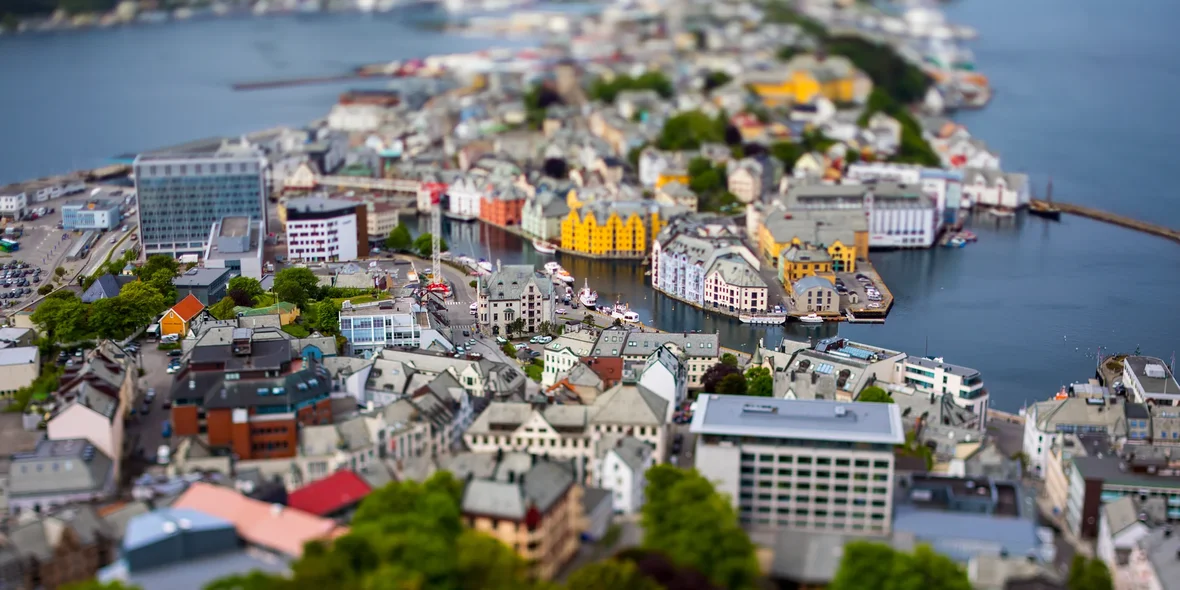
Real Estate in the Smallest Countries of the World — Overview and Features
When we talk about countries, most people usually picture large states such as the United States, China, or India. Yet, on the world map, there are completely different players: microstates whose territory is smaller than many urban districts. For perspective: the Vatican covers only 0.49 km², meaning it could fit inside New York’s Central Park (3.4 km²) almost seven times.
These countries occupy a unique position — they are fully sovereign states with their own political systems and laws, yet they are extremely limited in territory. This makes both land and property incredibly scarce resources, sometimes pushing prices to some of the highest levels in the world.
However, this is not always the case. The top list of such countries is marked by striking contrasts in real estate values. In this article, we will explore the characteristics of the world’s smallest states and examine the specifics of their property markets.
The Smallest Countries in the World
If we take land area as the basis, there are only a few dozen states worldwide that can be classified as «microstates.» Most of them are either island nations in the Pacific and Indian Oceans or historic enclaves in Europe. What they all have in common is their size: less than 350 km², which makes them comparable to small cities.
Top 10 smallest countries in the world by area:
|
№ |
Country |
Area (km²) |
|
1 |
Vatican City |
0.49 |
|
2 |
Monaco |
2.02 |
|
3 |
Nauru |
21 |
|
4 |
Tuvalu |
26 |
|
5 |
San Marino |
61 |
|
6 |
Liechtenstein |
160 |
|
7 |
Marshall Islands |
181 |
|
8 |
Saint Kitts and Nevis |
261 |
|
9 |
Maldives |
298 |
|
10 |
Malta |
316 |
All of these countries are members of the United Nations (except for Vatican City, which holds observer status) and enjoy internationally recognized sovereignty. At the same time, each of them has its own unique specifics.
Vatican City
Vatican City is the smallest country in the world, with an area of just 0.49 km² and a population of around 800 people, most of whom are clergy, employees of the Roman Curia, and members of the Swiss Guard. The state is located in the very heart of Rome. It is here that the spiritual and administrative authority of the Catholic Church is concentrated, and it also serves as the residence of the head of state — the Pope.
Until 1870, the Vatican controlled vast territories in central Italy, known as the Papal States. During the unification of Italy, the kingdom’s troops occupied Rome, and the Pope effectively lost his temporal power. This gave rise to the so-called «Roman Question»: the Pope remained a sovereign ruler, but the state itself had ceased to exist.
The issue was resolved only in 1929 with the signing of the Lateran Treaty between the Italian government and Pope Pius XI. Under this agreement, Italy officially recognized Vatican City as an independent state, while the Holy See renounced any claims to the former Papal lands.
Today, Vatican City is unique in that it has no real estate market in the conventional sense. All land and buildings belong to the Holy See and are not subject to buying or selling. Residential units are allocated exclusively to clergy and Vatican employees. For laypeople, acquiring property within the state is absolutely impossible.
Instead of real estate revenues, the Vatican’s GDP is generated primarily from tourism (millions of pilgrims each year), donations from Catholics worldwide, and income from investment activities managed through the Vatican Bank.
Monaco
Monaco covers only 2.02 km², yet over 36,000 people live here, making it the most densely populated country in the world, with more than 18,000 residents per km² (for comparison: in neighboring France the figure is about 120 residents per km²). Despite being completely surrounded by French territory, Monaco has preserved its independence through a combination of diplomacy and strategic agreements:
- 1641 — under the Treaty of Péronne, France recognized Monaco’s independence in exchange for a military alliance.
- 1861 — following unrest in Menton and Roquebrune, the principality ceded these territories to France in return for official recognition of its sovereignty.
- 1918 — the Franco-Monegasque Treaty established that France would guarantee the protection of Monaco, while the principality agreed to align its foreign policy with France.
- 2002 — a new treaty confirmed that even if the ruling Grimaldi dynasty were to end (Monaco is a monarchy), the country would retain its independence; previously, full integration into France had been foreseen.
When it comes to real estate, Monaco’s real estate market is far more dynamic than Vatican City’s — and it holds the title of the most expensive in the world. The average price per square meter stands at €50,000—55,000. For comparison: in Hong Kong the figure is around €20,000/m², while in London it is about €15,000/m². Luxury apartments in the districts of Monte Carlo and La Condamine can reach an astonishing €100,000 per m².
These extreme prices are driven by the absolute scarcity of land combined with the absence of personal income tax for residents. This unique environment attracts major investors and ultra-high-net-worth individuals, reinforcing Monaco’s image as an exclusive hub for the global elite. In this sense, the prestige factor has become detached from traditional market fundamentals and the country itself functions as a status symbol.
Nauru
Nauru, located in Micronesia, is a tiny island nation with an area of just 21 km² and a population of around 12,000 people. It is the only country in the world without an official capital. The Yaren District serves as the administrative center.
The island was first sighted by Europeans in 1798 and became a German colony at the end of the 19th century. After World War I, Nauru was placed under a League of Nations mandate and jointly administered by Australia, the United Kingdom, and New Zealand. In 1968, it declared independence and became a sovereign state, while maintaining close ties with Australia and the Commonwealth of Nations.
The real estate market here is virtually non-existent. Most land belongs to local clans and is held under collective ownership. The sale of land to foreigners is strictly prohibited. Leasing is possible, but only on a private basis and not under standard market conditions. As a result, Nauru is largely unattractive to foreign real estate investors.
Tuvalu
Tuvalu, located in the Pacific Ocean, consists of nine atolls and islands. Its total land area is just 26 km², with a population of about 11,000 people. It is one of the least visited countries in the world and also one of the most vulnerable to climate change: much of its land rises only 3–4 meters above sea level.
Formerly a British colony, Tuvalu gained independence in 1978 and became a member of the Commonwealth of Nations, as well as a signatory to the Cotonou Agreement between the European Union and the ACP (African, Caribbean, and Pacific) countries. Thanks to these agreements, Tuvalu citizens can travel visa-free within the Schengen Area.
As in Nauru, the local real estate market is effectively closed to foreigners. Land is traditionally held in collective clan ownership, and leasing is allowed only in limited cases and under restrictive conditions.
San Marino
San Marino is considered one of the oldest states in Europe. According to legend, it was founded in 301 AD by a stonemason from Dalmatia on the slopes of Mount Titano. Today, it covers 61 km² and is home to about 34,000 people.
Despite being entirely surrounded by Italy, San Marino has preserved its independence. The first foundations of this status were laid in 1631, when the Pope officially recognized its sovereignty. During the unification of Italy, Giuseppe Garibaldi even offered San Marino the opportunity to join the new state, but the republic declined. Today, San Marino is a member of the Council of Europe, though it is not part of the EU.
Average housing prices in San Marino are about €2500—3000 per m², which is lower than in neighboring Italy. Foreigners can purchase real estate, but only with special government approval. Most property transactions involve locals, with some interest from Italians, while demand from other EU citizens remains limited.
Liechtenstein
Liechtenstein is a small principality situated between Switzerland and Austria. Its area is 160 km², and its population is about 39,000 people. It is a constitutional monarchy ruled by the princely House of Liechtenstein, which has governed since the 17th century.
Although not a member of the EU, Liechtenstein is part of the European Economic Area (EEA) and the Schengen Zone. Citizens can move freely within the EU, while visa rules for foreign tourists are aligned with Swiss regulations.
The real estate market in Liechtenstein is considered one of the most restricted in Europe. Purchasing property as a non-resident requires special government permission. As a result, price growth is driven primarily by limited supply rather than foreign demand.
The average cost of housing ranges from €5000 to €10,000 per m², comparable to Switzerland. However, the dominant trend is in rentals: up to 60% of the population, especially cross-border workers from Austria and Switzerland, live in rented accommodation.
Marshall Islands
The Marshall Islands is a Pacific nation located in Micronesia. It consists of 29 atolls and 5 individual islands, with a total land area of about 181 km² and a population of under 42,000 people.
Before World War II, the islands were under Japanese control, and after the war they came under U.S. administration. In 1986, the Republic of the Marshall Islands officially became independent but entered into the Compact of Free Association (COFA) with the United States.
Under this agreement, the country retains full sovereignty but voluntarily delegates certain powers primarily in defense and foreign policy to the U.S. in exchange for financial and political support. To this day, the U.S. is responsible for the defense of the islands, provides substantial economic aid, and operates military facilities on their territory (for example, the base on Kwajalein Atoll).
Although the Marshall Islands has no direct agreements with the EU, it is part of the ACP group (African, Caribbean, and Pacific states), which cooperate with the European Union under the Cotonou Agreement. This grants Marshallese citizens visa-free access to the Schengen Area.
Real estate market characteristics:
- Land is held under traditional collective clan ownership.
- Sale of land to foreigners is prohibited; leasing remains the main channel of access for external actors (e.g., tourism or infrastructure projects).
- The housing stock is limited, and the secondary property market is virtually non-existent.
- Average rental costs are about 14% lower than in the United States, but market liquidity is significantly weaker.
Saint Kitts and Nevis
Saint Kitts and Nevis is a Caribbean island nation located in the Western Hemisphere. With a population of about 50,000 people and a total area of 261 km², the country consists of two islands: Saint Kitts (Saint Christopher) and Nevis.
The islands were British colonies from the 17th century until 1983, when they gained full independence while remaining part of the Commonwealth of Nations. Formally, the British monarch is still the head of state, represented locally by a governor-general appointed by London.
Like other Caribbean nations, Saint Kitts and Nevis belongs to the ACP group of states and cooperates with the European Union under the Cotonou Agreement, which grants its citizens visa-free travel to the Schengen Area (90 days within a six-month period). In addition, they enjoy visa-free access to the United Kingdom, Hong Kong, and Singapore.
In 1984, Saint Kitts and Nevis became the first country in the world to launch a Citizenship by Investment (CBI) program, allowing foreigners to obtain citizenship by investing in real estate or in the national development fund.
- Minimum real estate investment: $325,000 (shared ownership) or $600,000 (individual ownership).
- Average property prices: $4000–5000 per m² for apartments.
- High-end villas: typically range from $1.5–2 million.
This pioneering CBI program has since become a model for other countries in the region, making Saint Kitts and Nevis one of the most recognized global hubs for investment migration.
Maldives
The Republic of Maldives is not just an island state but an entire archipelago in the Indian Ocean, consisting of 26 atolls and more than 1,000 islands. The total land area is only 298 km², with a population of about 520,000 people. Despite its small size, the Maldives is world-renowned as one of the most prestigious luxury tourism destinations.
The country cooperates with the EU through development programs for small island states, and since 2010, Maldivian citizens have enjoyed visa-free entry to the Schengen Area.
The constitution prohibits the sale of land to foreigners. However, a system of long-term leases has been established: up to 50 years for private investors and up to 99 years for tourism-related projects and resorts.
- Apartments in Malé (the capital) average $5000–10,000 per m².
- Resort villas range from $1 million to $3–7 million, though transactions usually involve leasehold rights rather than outright ownership.
Malta
Malta is the only Mediterranean island country in this ranking. With an area of 316 km² and a population of around 500,000, its independence is notable given that all surrounding islands belong to larger states.
Over the centuries, Malta was controlled by multiple powers — from the Roman Empire and the Crown of Aragon to the Knights Hospitaller. In 1814, it officially became a British colony. Like other British Mediterranean holdings (Gibraltar, Cyprus), Malta later achieved full independence.
In 2004, Malta joined the European Union and is today a full member of the Schengen Zone. The real estate market is completely open to EU citizens, while non-EU nationals may buy property only in designated areas known as Special Designated Areas (SDAs).
The market is both developed and diverse, ranging from historic houses in Valletta to modern waterfront complexes.
- Average apartment in Malta prices: €3000—4500 per m².
- High-end projects and SDA properties: €6000—8000 per m², with prime developments reaching €10,000—13,000 per m².
Summary
Small states are not always just geographical exotica. Their real estate markets are very diverse and in some places they set world records for the price per square meter, while in other countries with a similar land area real estate does not exist at all as an object of ownership.
Thus the theory that the smaller the territory the sharper its value becomes is not always a rule. The final result always depends not on how much territory a state has but on how it manages it.
Author
I write informative articles about real estate, investments, job opportunities, taxes, etc.










